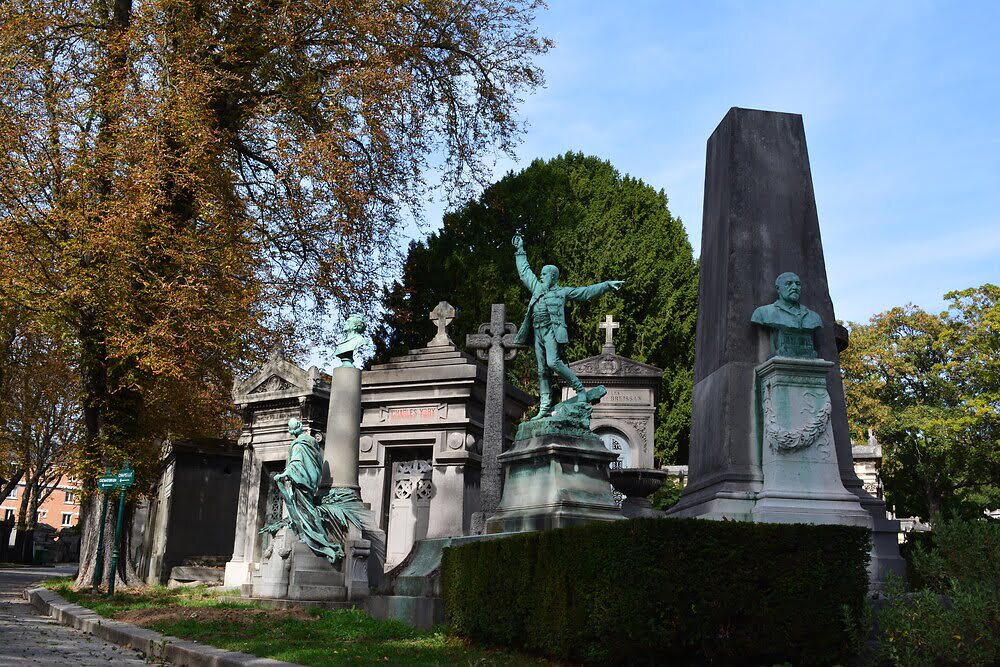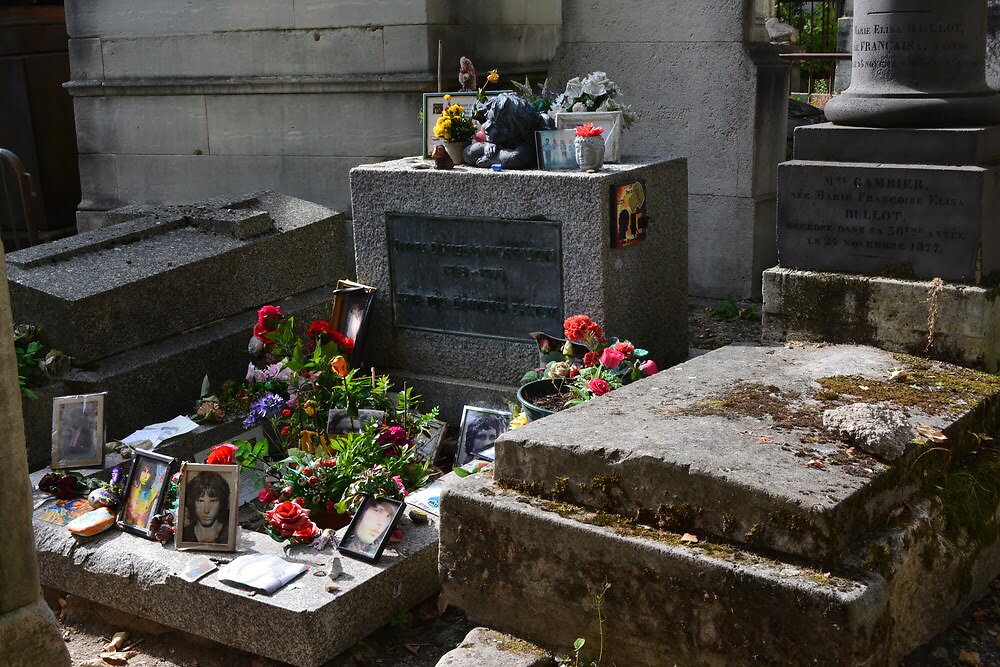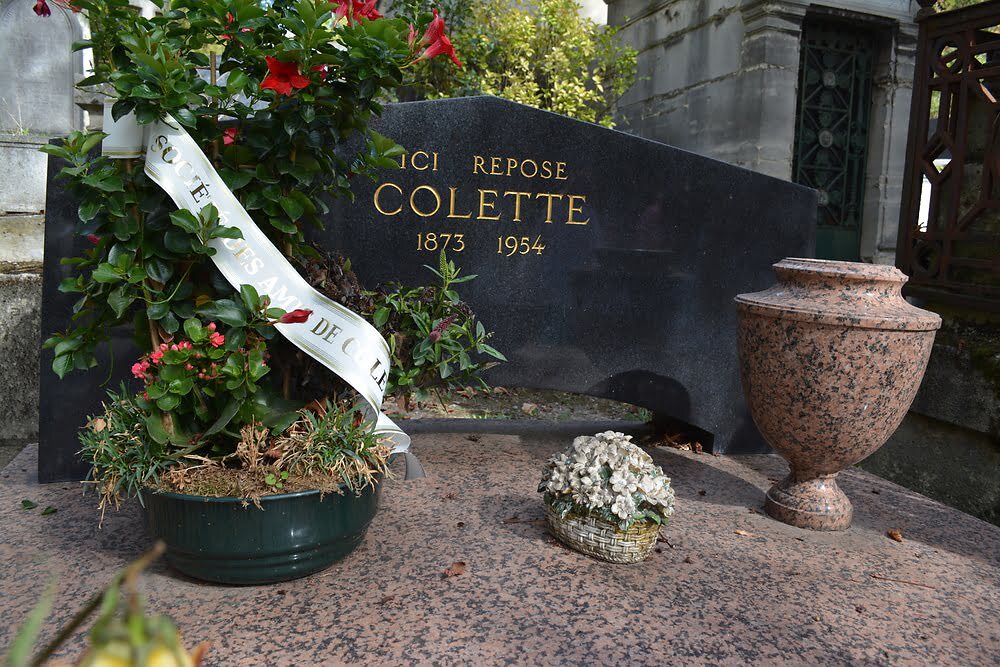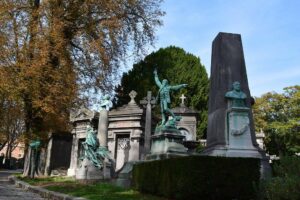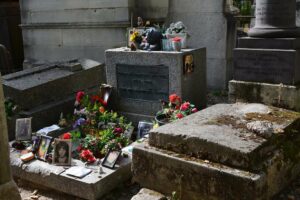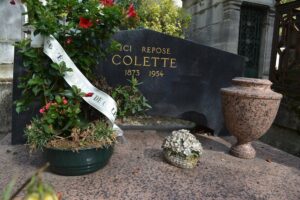- Paris Hotels
- Hotels by Category
- Hotels by Districts
- Champs Elysees Hotel
- Montmartre Hotel
- Saint Germain des Prés Hotel
- Montparnasse Hotel
- Porte de Versailles Hotel
- Republique – North Train Station Hotel
- Place de la Nation Hotel
- Latin Quarter Hotel
- Opera Garnier Hotel
- Marais – Bastille Hotel
- Gare de Lyon Hotel
- Gare Saint-Lazare Hotel
- Hotel Place d’Italie
- Other Hotels
- Hotels by Category
- Districts
- Paris map
- News
- Contact us
Père-Lachaise Cemetery
- Profile
- prev
- next
- prev
- next
-
A huge historical graveyards, like a “Town of the Deads within the city”.
At begining the “Père Lachaise” was a poor district, with many outlaws, winding streets, shady avenues. It’s located on the old hill of “Champ l’Evêque”, where a rich merchant built his house in 1430.
In the 17th century the Jesuits converted it into a hospice for members of their order. It became a meeting place under influence of “Père de La Chaise” Louis XIV’s confessor. In 1803, under Napoléon, the Prefect of Paris bought it to built a cemetery. It was an incredibly successful piece of land speculation. Nicolas Frochot, the urban planner who bought the land, persuaded the civil authorities to rebury Molière, La Fontaine, Abélard and Héloïse in his new cemetery. Quickly the Père-Lachaise became the ultimate symbol for the rich and successful.
Ironically, Frochot even sold a plot to the original owner for considerably more money than the price he had paid for the entire site. Even today, the rates are still extremely high. Some of the most celebrated dead have unremarkable tombs while those whose fame died with them or who were nonentities to start with have the most expressive monuments.
What to see ?
Not to miss the ex-Doors lead singer Jim Morrison’s tomb, located in Division 6, where a motley assembly of devotees roll spliffs against a backdrop of Doors’ Lyrics and declarations of love and drug consumption, graffitied in every western language on every stone in sight. Femme fatale Colette’s tomb, close to the main entrance in division 4, is very plain though always covered in flowers. The same is true for the divine Sarah Bernhardt’s (division 44) and the great chanteuse Edith Piaf’s (division 97, under her married name of Mme Lamboukas).
Marcel Proust lies in his family’s conventional tomb (division 85), erected to honour the medical fame of his father.In division 92, nineteenth-century journalist Victor Lenoir – shot for daring to criticize a relative of Napoleon III – lies flat on his back, fully clothed, his top hat fallen by his feet. His prostrate figure has been a magnet not for anti-censorship campaigners, but for infertile women rubbing themselves against him as a sexual charm. Close by, a forgotten and unlamented French diplomat must turn in his grave with envy – he provided himself with an enormous tapering phallus, admirably higher than the trees around it in division 48. In division 71 two men lie together hand in hand – not a gay couple (as far as anyone knows); but a pair of balloonists who went so high they died from lack of oxygen.
Other famous people include Felix Faure (division 4), French president, who died in the arms of his mistress in the Elysee palace in 1899. Draped in a French flag like a sheet, his head is raised and his hand seems to be groping the flag pole as if his lover. Gericault (with the Raft of the Medusa on the side of his tomb) reclines on cushions of stone (division 12), painting palette in hand, his neck and bony face taut with concentration.
Painter Corot (division 24) and novelist Balzac (division 48) both have superb busts, Balzac looking particularly satisfied with his life. Chopin (division 11) has a willowy muse weeping for his loss. The most impressive of the individual tombs is Oscar Wilde’s, for which Jacob Epstein sculpted a strange Pharaonic winged messenger.
Approaching Oscar Wilde’s grave from the centre of the cemetery, you pass the tomb of Auguste Blanqui (division 91), after whom so many French streets are named. Described by Karl Marx as the nineteenth century’s greatest revolutionary, he served his time in jail – 33 years in all – for his political activities that spanned the 1830 Revolution to the Paris Commume. Below Blanqui’s and Wilde’s graves – along with Victor Lenoir and Raphael Roger – you’ll find in division 96 the grave of Modigliani and his lover Jeanne Herbuterne, who killed herself in crazed grief a few days after he died in agony from meningitis. Laura Marx, Karl’s daughter, and her husband Paul Lafargue, who committed suicide together in 1911, lay too in this southeast corner of the cemetery (division 76).
But it is the monuments to the collective, violent deaths that have the power to change a sunny outing to Père-Lachaise into a much darker experience. In division 97, you’ll find the memorials to those who died in the Nazi concentration camps, to executed Resistance fighters and to those who were never accounted for in the genocide of World War II. The sculptures are relentless in their images of inhumanity, of people forced to collaborate in their own degradation and death.
Finally, there is the Mur des Fedérés (division 76), the wall where the last troops of the Paris Commune were lined up and shot in the final days of the battle. The man who ordered their execution, Adolphe Thiers, lays in the centre of the cemetery in division 55.
Increased six-fold during the last century, the 100,000 sepulchres now receive a million visitors a year.
Location : 16 Rue du Repos 75020 Paris
Phone : 01 55 25 82 10
How to get there :
- Metro line 2 : Père-Lachaise, Philippe-Auguste
- Bus : 61, 69, 26
Opening :
- Daily 8 am – 7 pm.
- No admission charge.
- A good map of the cemetery is available for a few euros in the newsagent and flower shop on avenue Pere-Lachaise and at outlets near the main entrance on Boulevard de Ménilmontant.
Official website : https://www.paris.fr/dossiers/bienvenue-au-cimetiere-du-pere-lachaise-47/
-
16 Rue du Repos, 75020 Paris, France
Nearby hotels
-
14 Rue Stanislas, 75006 Paris, France
-
32 Rue des Saints-Pères, 75007 Paris, France
-
21 Rue de Penthièvre, 75008 Paris, France

